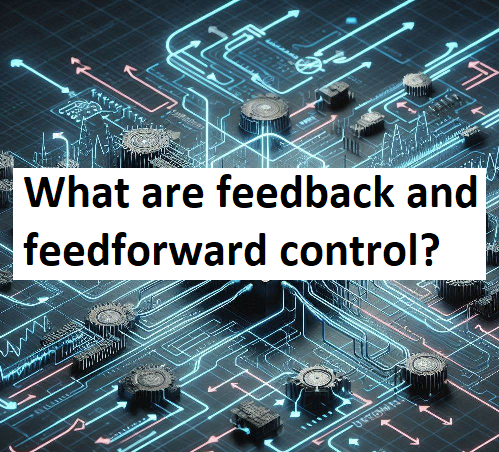Feedback and Feedforward Control: A Comparative Analysis – In the realm of control systems, feedback and feedforward control are two fundamental strategies employed to regulate the behavior of a process. While they share the common goal of maintaining a desired output, they differ significantly in their approach.

Feedback Control
Feedback control is a closed-loop system that uses the measured output of a process to adjust the input. It involves a continuous comparison between the desired setpoint and the actual output. If there is a deviation, the controller generates a corrective action to bring the output back to the setpoint.
Key Characteristics:
- Closed-loop system: The output is fed back to the input to form a closed loop.
- Error correction: Feedback control is reactive and responds to errors that have already occurred.
- Stability: Feedback control can help stabilize a system and prevent oscillations.
- Slower response: Feedback control may have a slower response time due to the time it takes to measure the output and generate a corrective action.
Example: A thermostat in a heating system measures the room temperature and adjusts the heating element accordingly to maintain a desired temperature.
Feedforward Control
Feedforward control is an open-loop system that uses predicted disturbances to adjust the input before the disturbance affects the output. It relies on knowledge of the process dynamics and external disturbances.
Key Characteristics:
- Open-loop system: There is no feedback loop.
- Predictive control: Feedforward control is proactive and anticipates disturbances.
- Faster response: Feedforward control can have a faster response time as it can adjust the input before the disturbance affects the output.
- Less effective for unpredicted disturbances: Feedforward control may not be as effective for disturbances that are not accurately predicted.
Example: A flow controller in a chemical process can adjust the flow rate of a reactant based on the predicted flow rate of another reactant to maintain a desired ratio.
Combined Feedback and Feedforward Control
In many real-world applications, a combination of feedback and feedforward control is used to achieve optimal performance. Feedback control is used to handle unexpected disturbances and maintain stability, while feedforward control is used to compensate for known disturbances and improve the system’s response time.
Example: A temperature control system for a furnace may use feedforward control to adjust the heating element based on the expected changes in external temperature, while feedback control is used to correct for any unexpected variations.
In conclusion, feedback and feedforward control are complementary strategies that can be used to enhance the performance of control systems. Feedback control provides stability and error correction, while feedforward control offers proactive disturbance rejection. By understanding the strengths and limitations of each approach, engineers can design effective control systems that meet the specific requirements of their applications.
Home | Join us on Facebook, Twitter, YouTube, Instagram, Quora, Reddit, LinkedIn, Pintereset, Blogger.